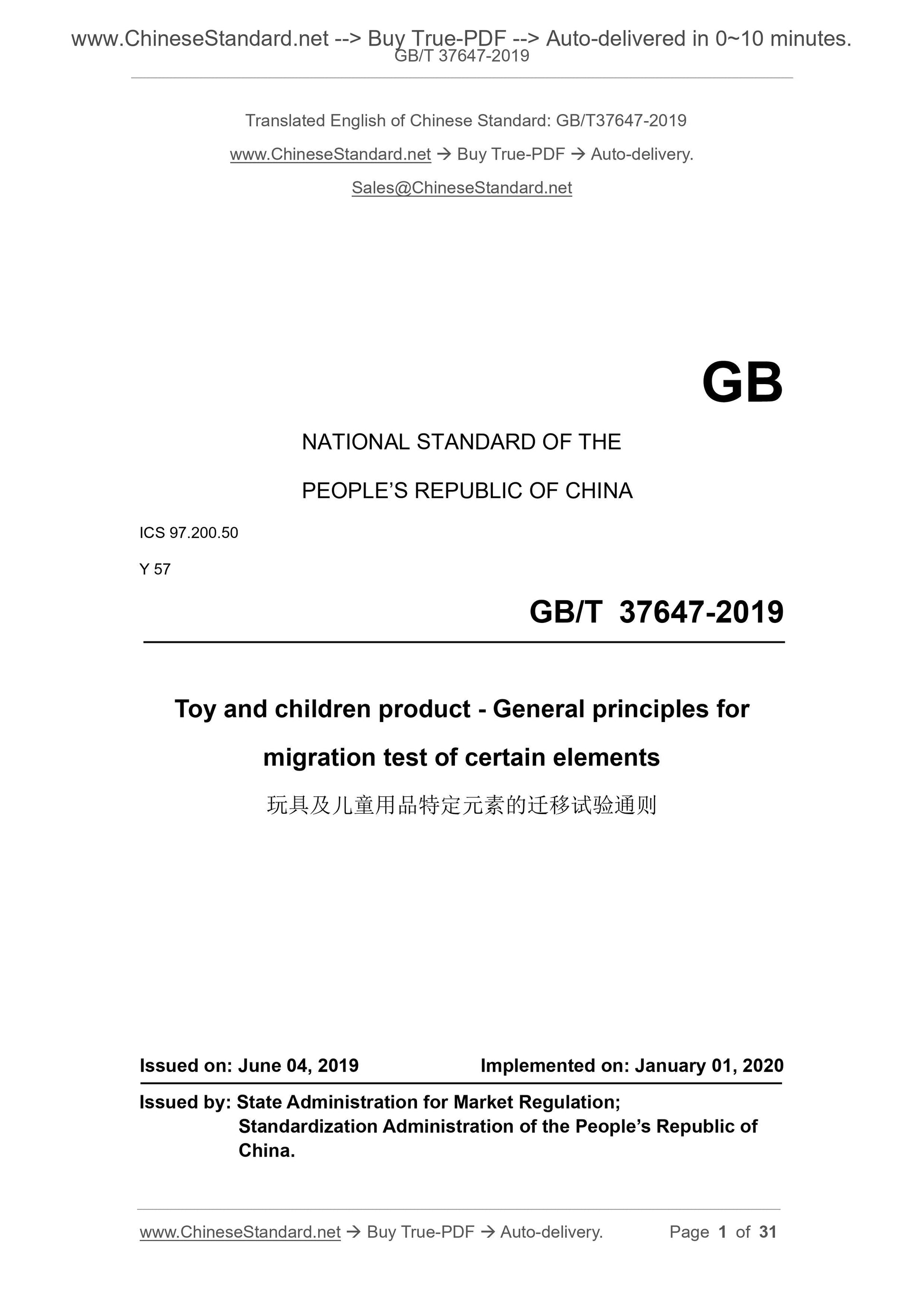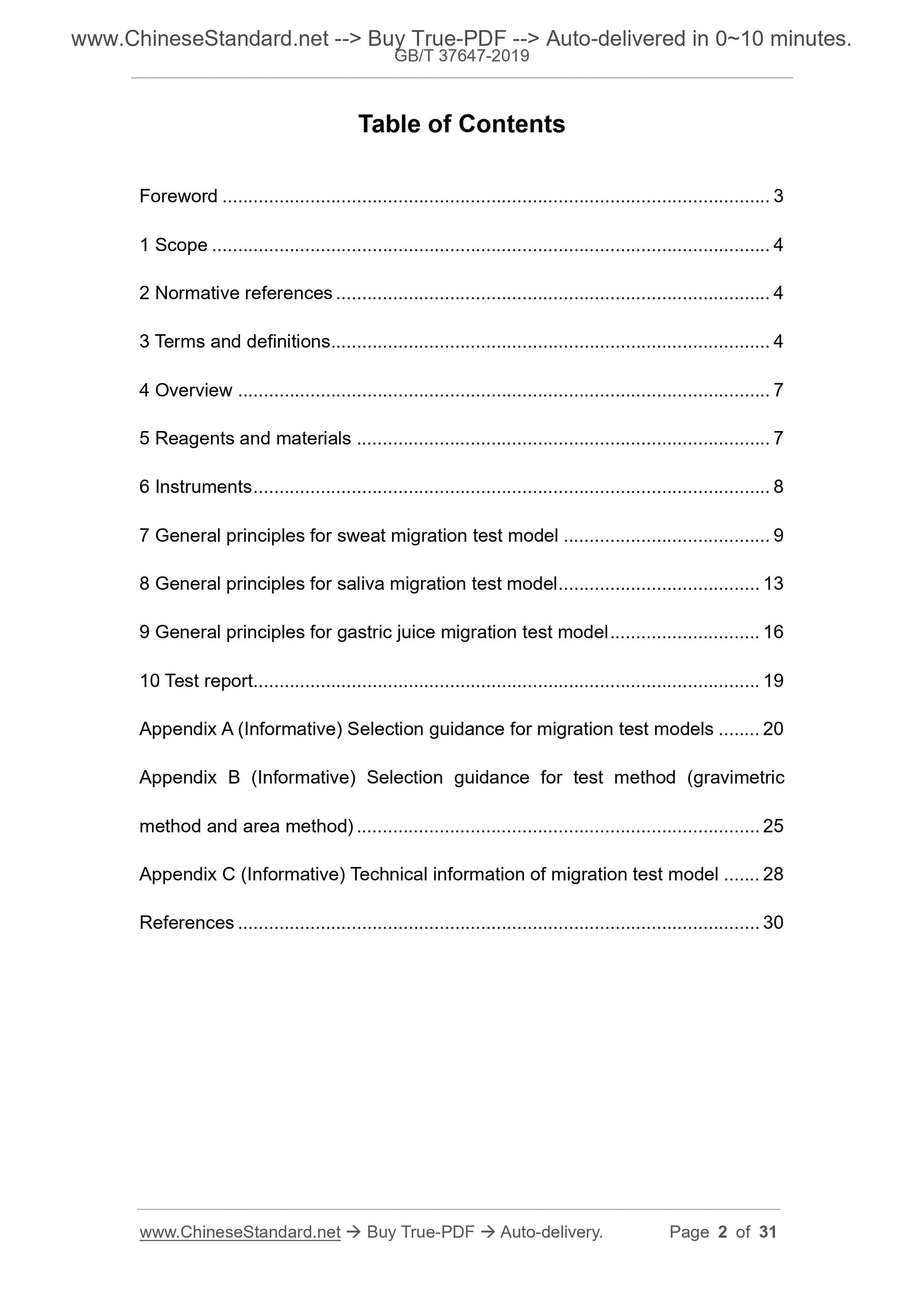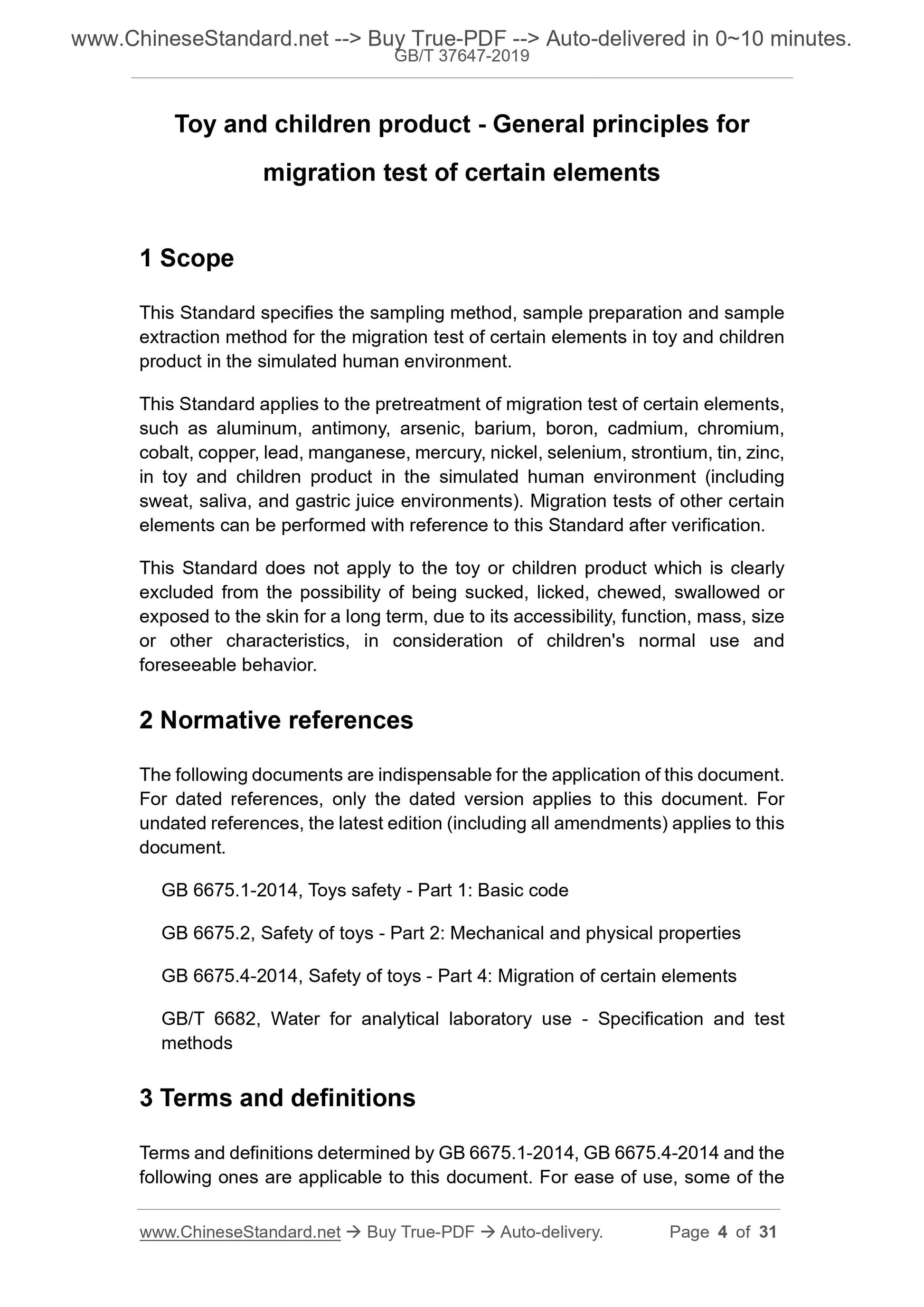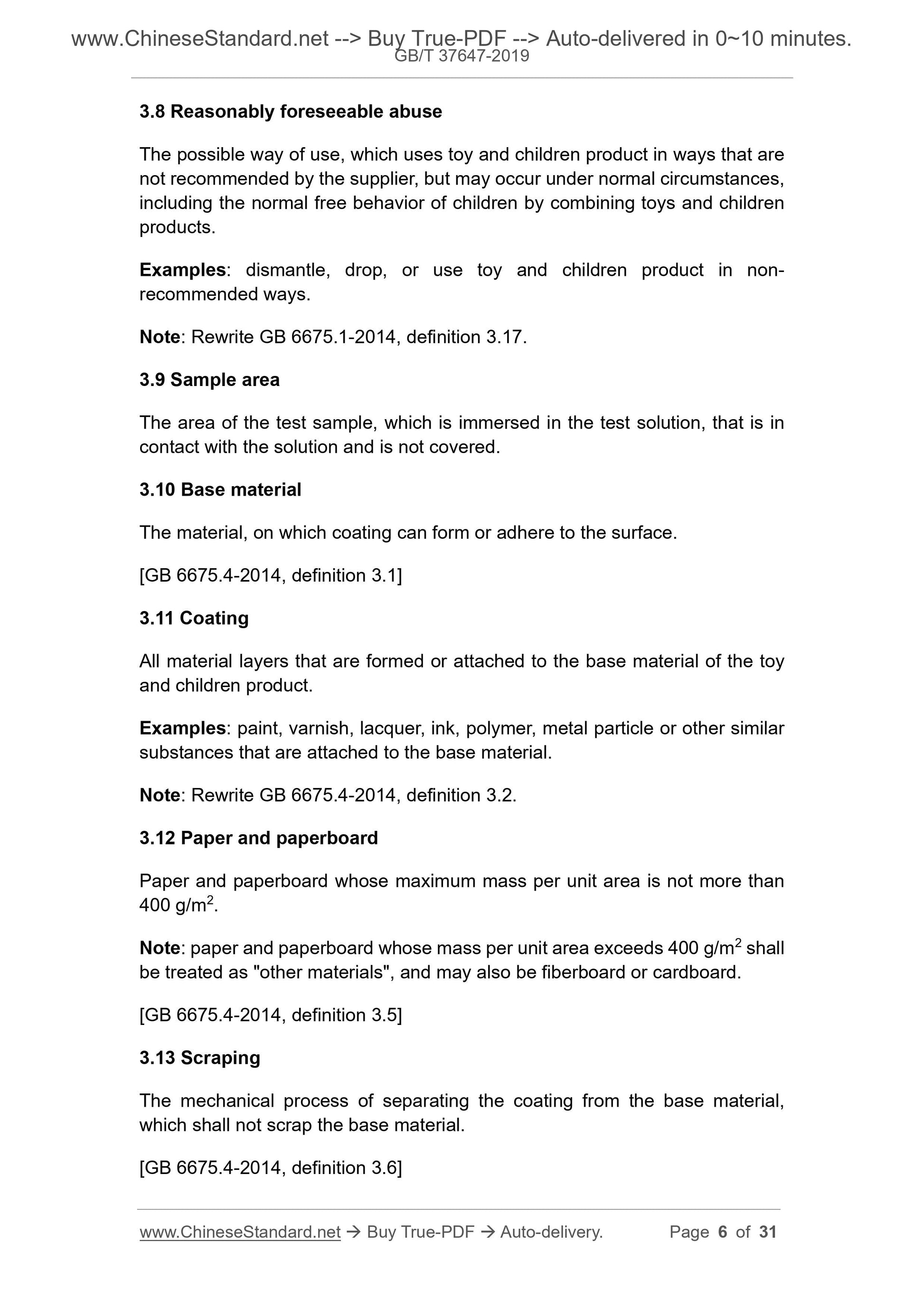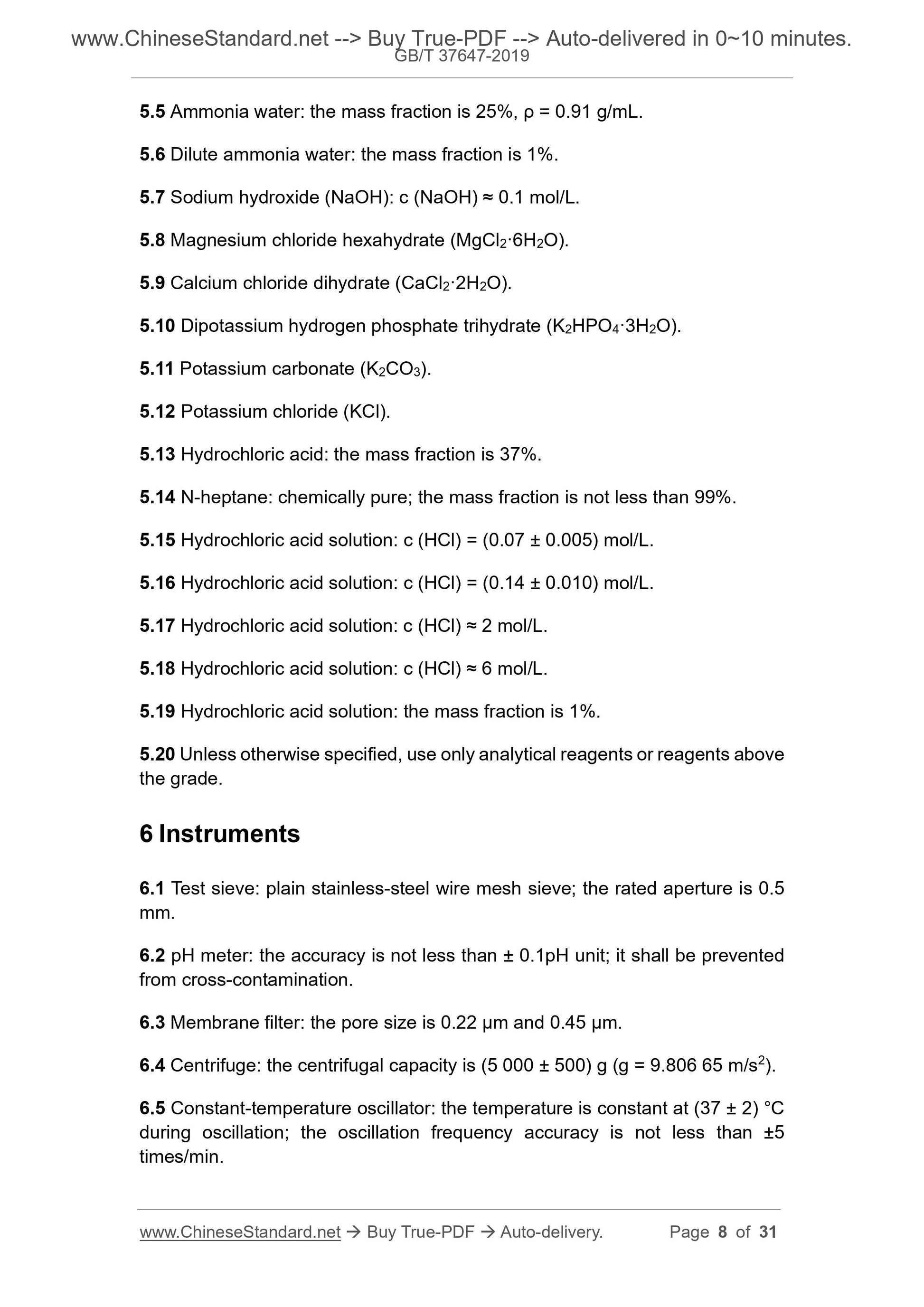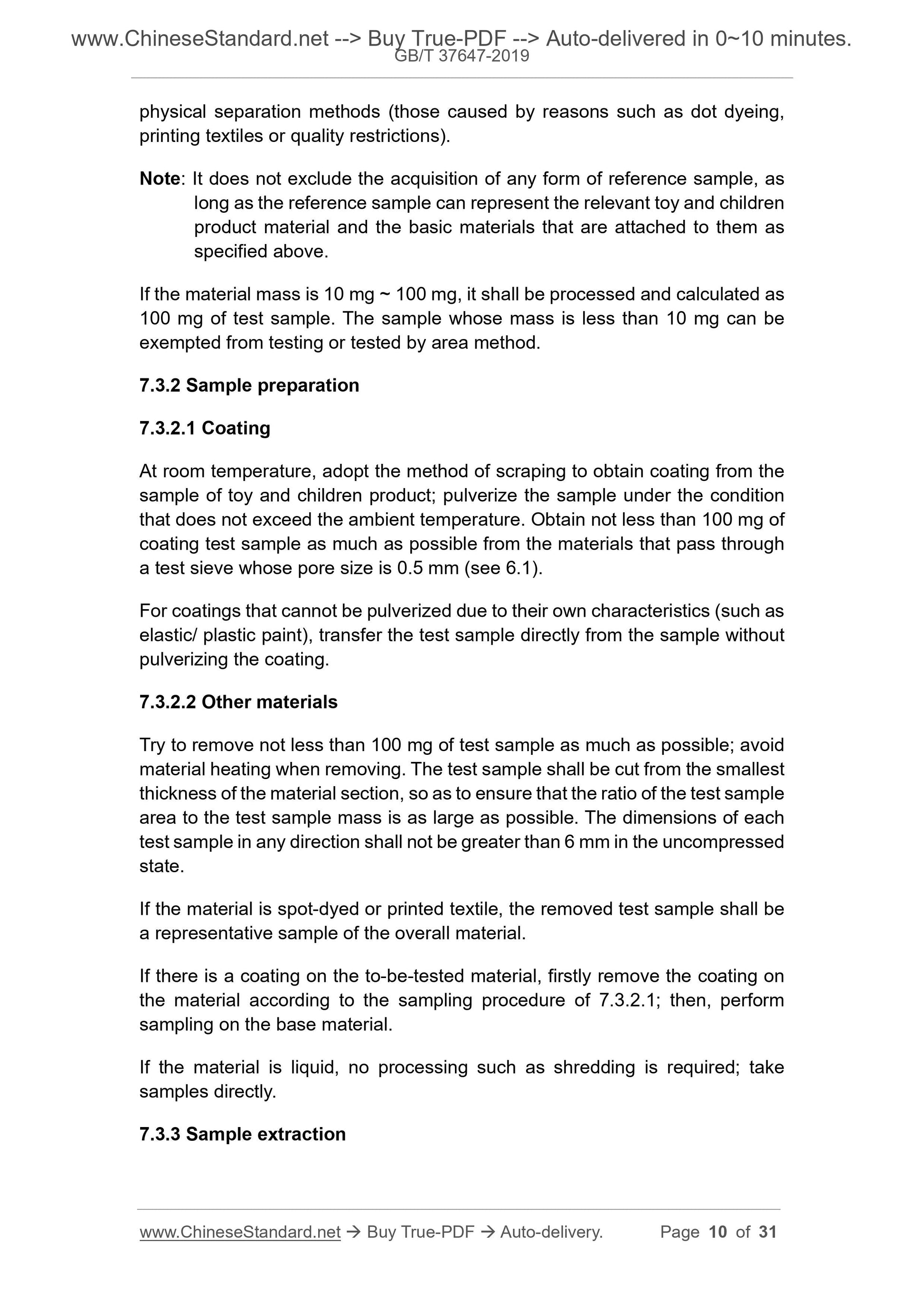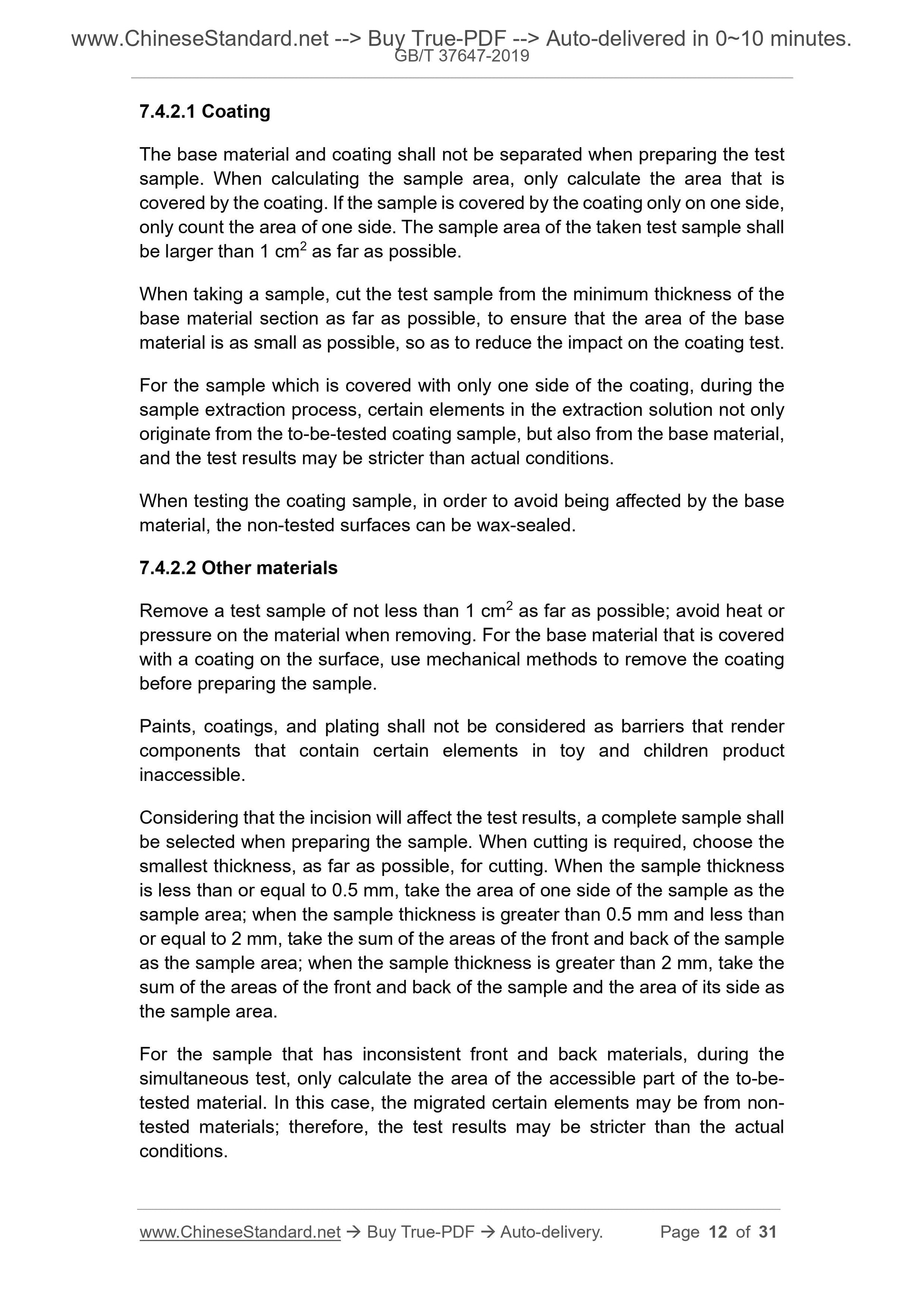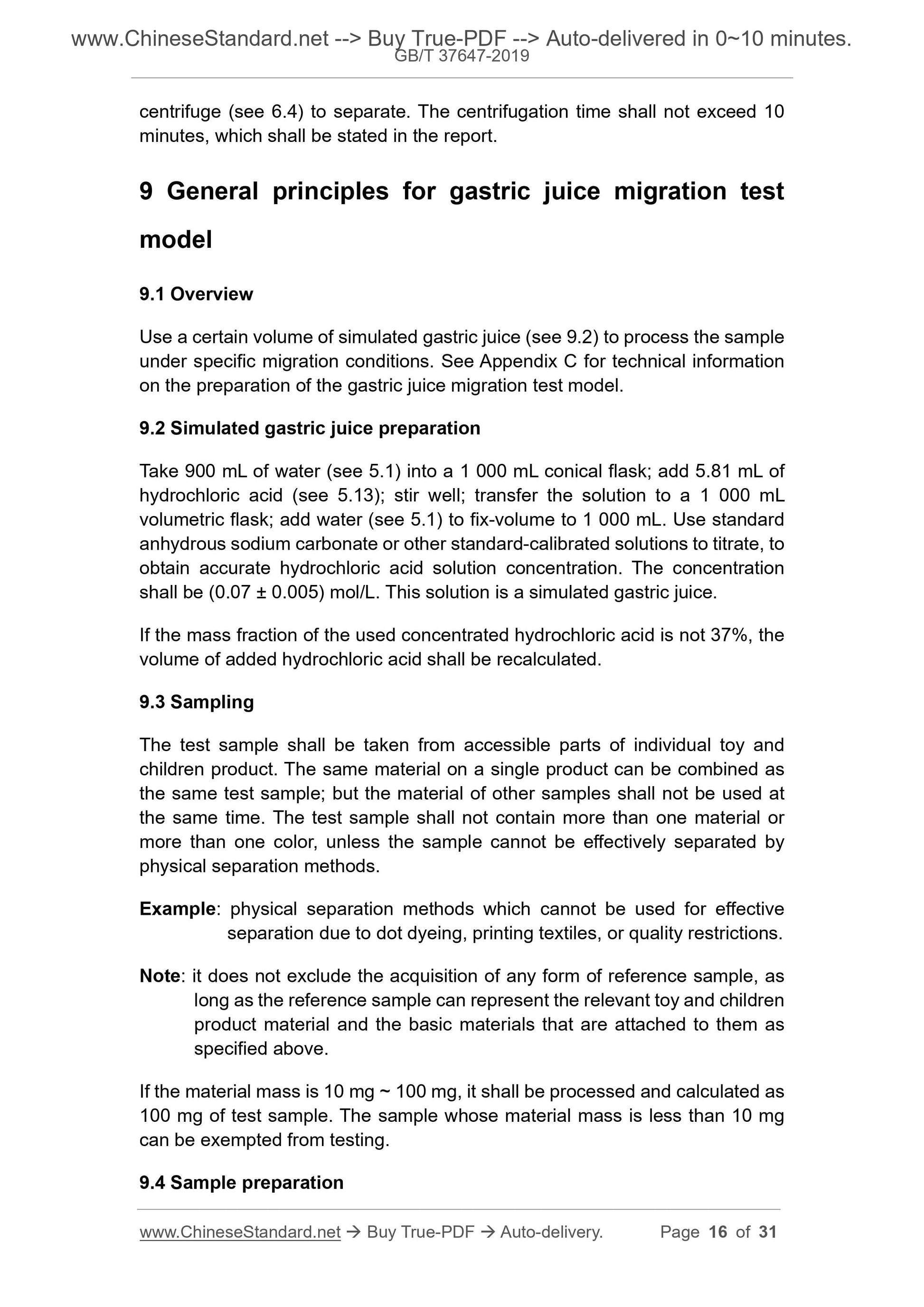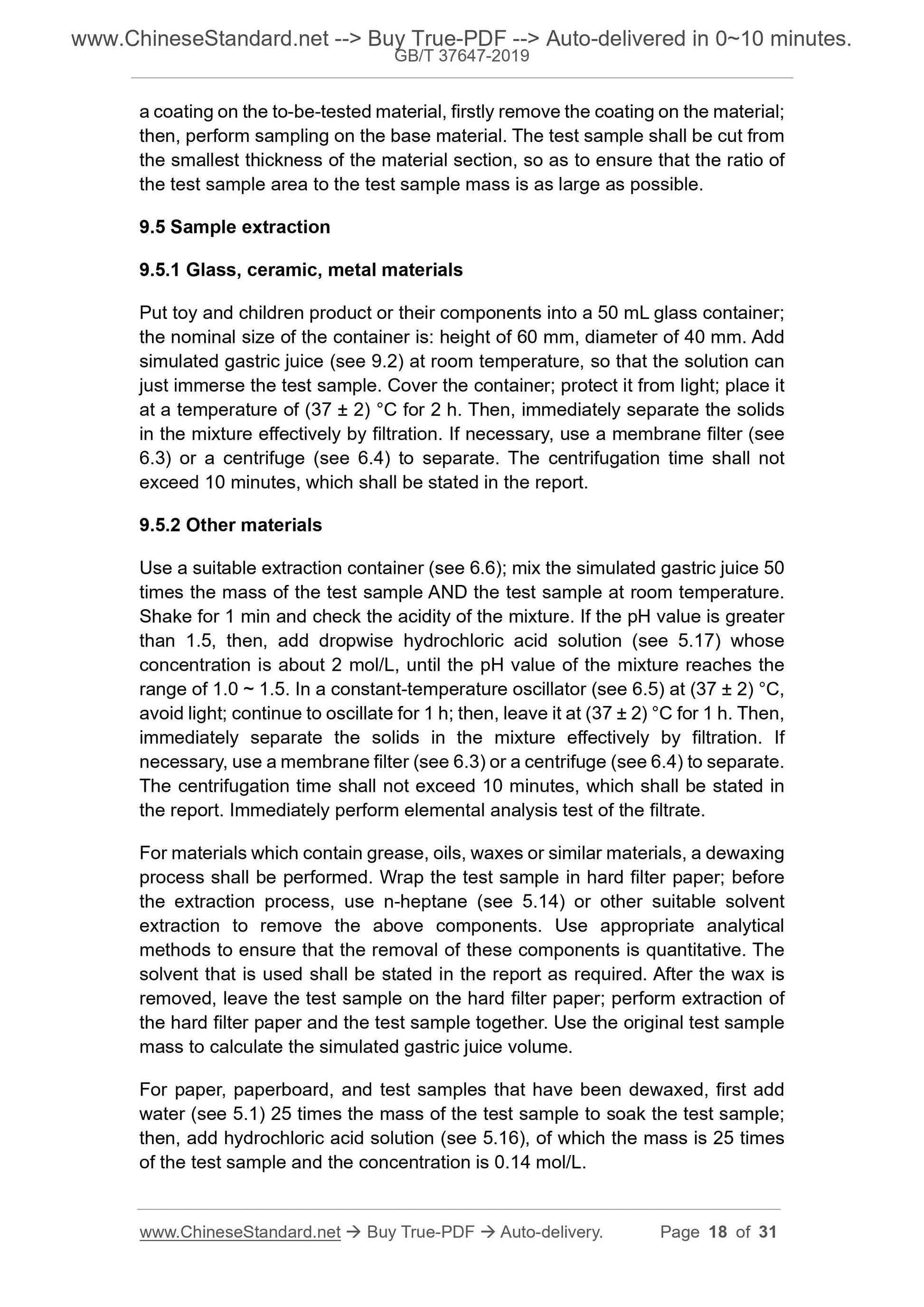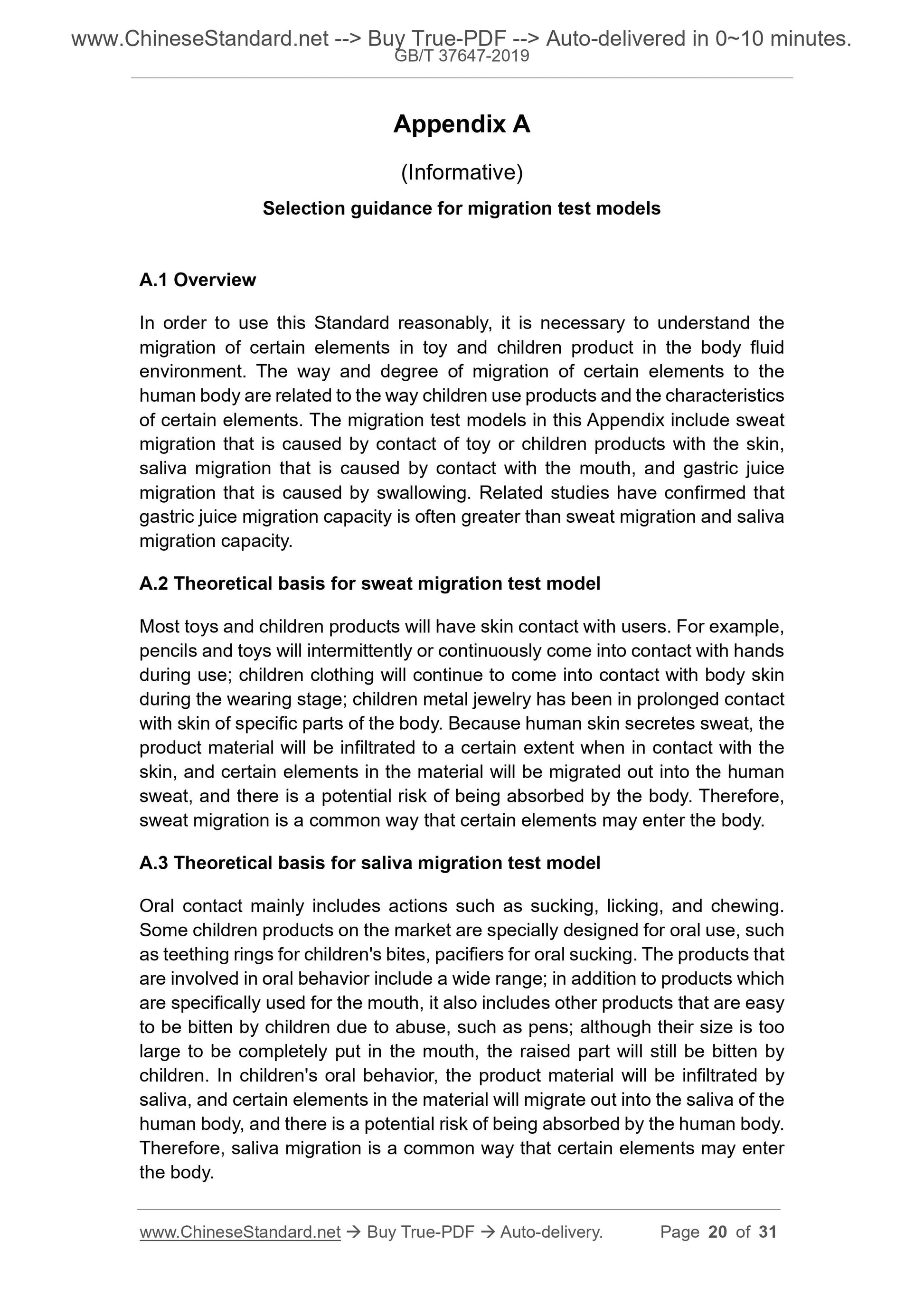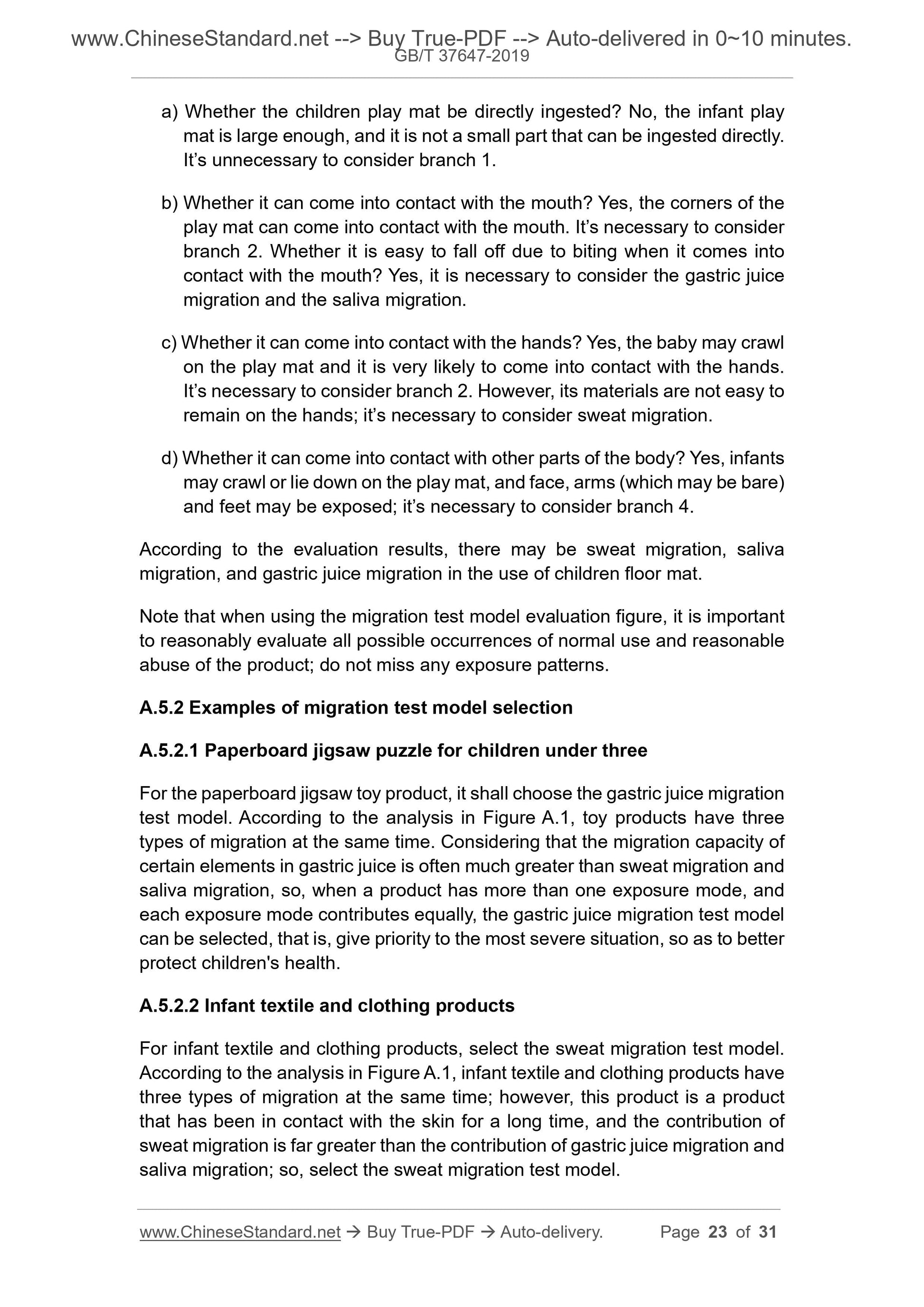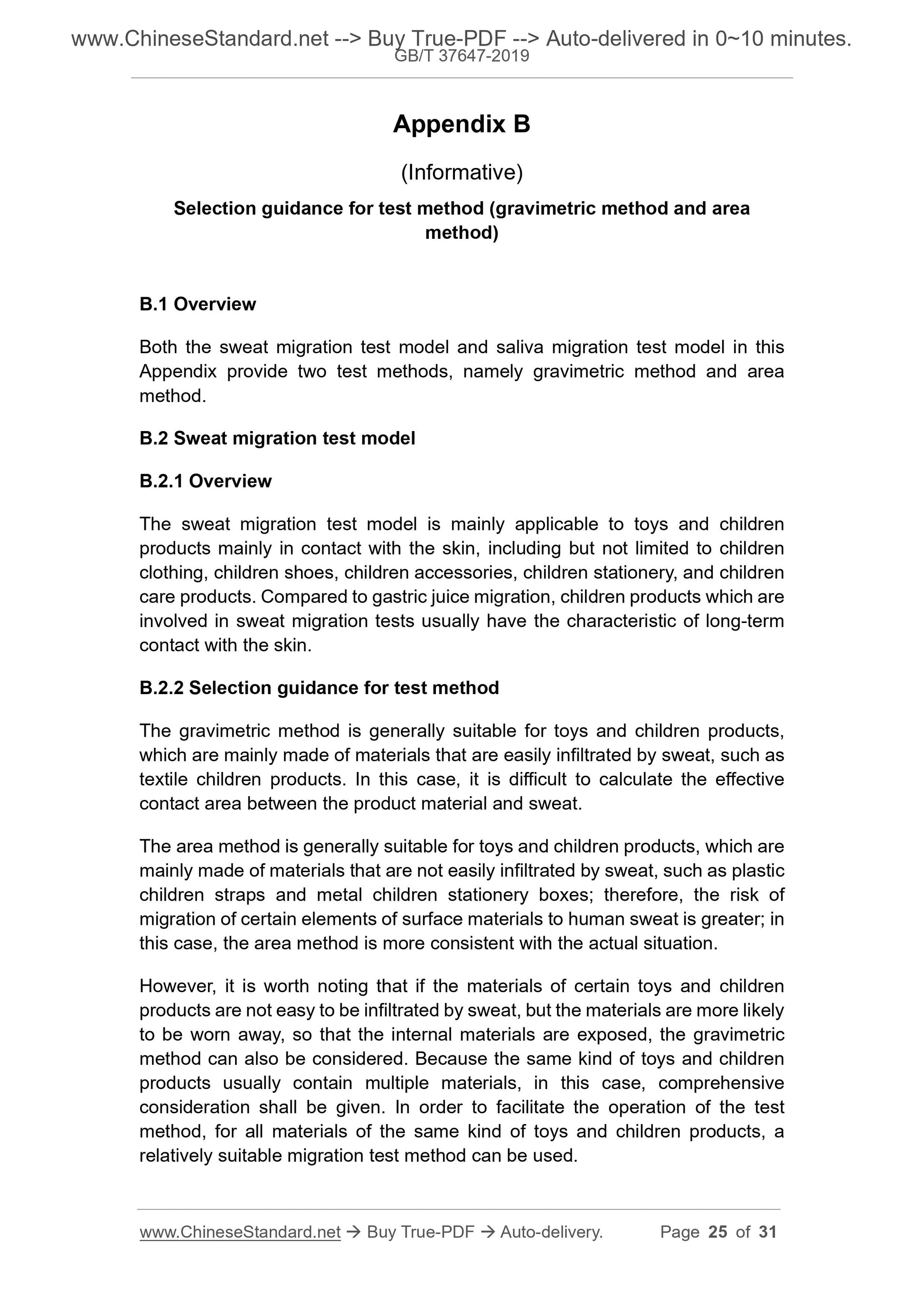1
/
of
12
www.ChineseStandard.us -- Field Test Asia Pte. Ltd.
GB/T 37647-2019 English PDF (GB/T37647-2019)
GB/T 37647-2019 English PDF (GB/T37647-2019)
Regular price
$230.00
Regular price
Sale price
$230.00
Unit price
/
per
Shipping calculated at checkout.
Couldn't load pickup availability
GB/T 37647-2019: Toy and children product - General principles for migration test of certain elements
Delivery: 9 seconds. Download (and Email) true-PDF + Invoice.Get Quotation: Click GB/T 37647-2019 (Self-service in 1-minute)
Newer / historical versions: GB/T 37647-2019
Preview True-PDF
Scope
This Standard specifies the sampling method, sample preparation and sampleextraction method for the migration test of certain elements in toy and children
product in the simulated human environment.
This Standard applies to the pretreatment of migration test of certain elements,
such as aluminum, antimony, arsenic, barium, boron, cadmium, chromium,
cobalt, copper, lead, manganese, mercury, nickel, selenium, strontium, tin, zinc,
in toy and children product in the simulated human environment (including
sweat, saliva, and gastric juice environments). Migration tests of other certain
elements can be performed with reference to this Standard after verification.
This Standard does not apply to the toy or children product which is clearly
excluded from the possibility of being sucked, licked, chewed, swallowed or
exposed to the skin for a long term, due to its accessibility, function, mass, size
or other characteristics, in consideration of children's normal use and
foreseeable behavior.
Basic Data
| Standard ID | GB/T 37647-2019 (GB/T37647-2019) |
| Description (Translated English) | Toy and children product - General principles for migration test of certain elements |
| Sector / Industry | National Standard (Recommended) |
| Classification of Chinese Standard | Y57 |
| Classification of International Standard | 97.200.50 |
| Word Count Estimation | 22,237 |
| Date of Issue | 2019-06-04 |
| Date of Implementation | 2020-01-01 |
| Issuing agency(ies) | State Administration for Market Regulation, China National Standardization Administration |
Share












